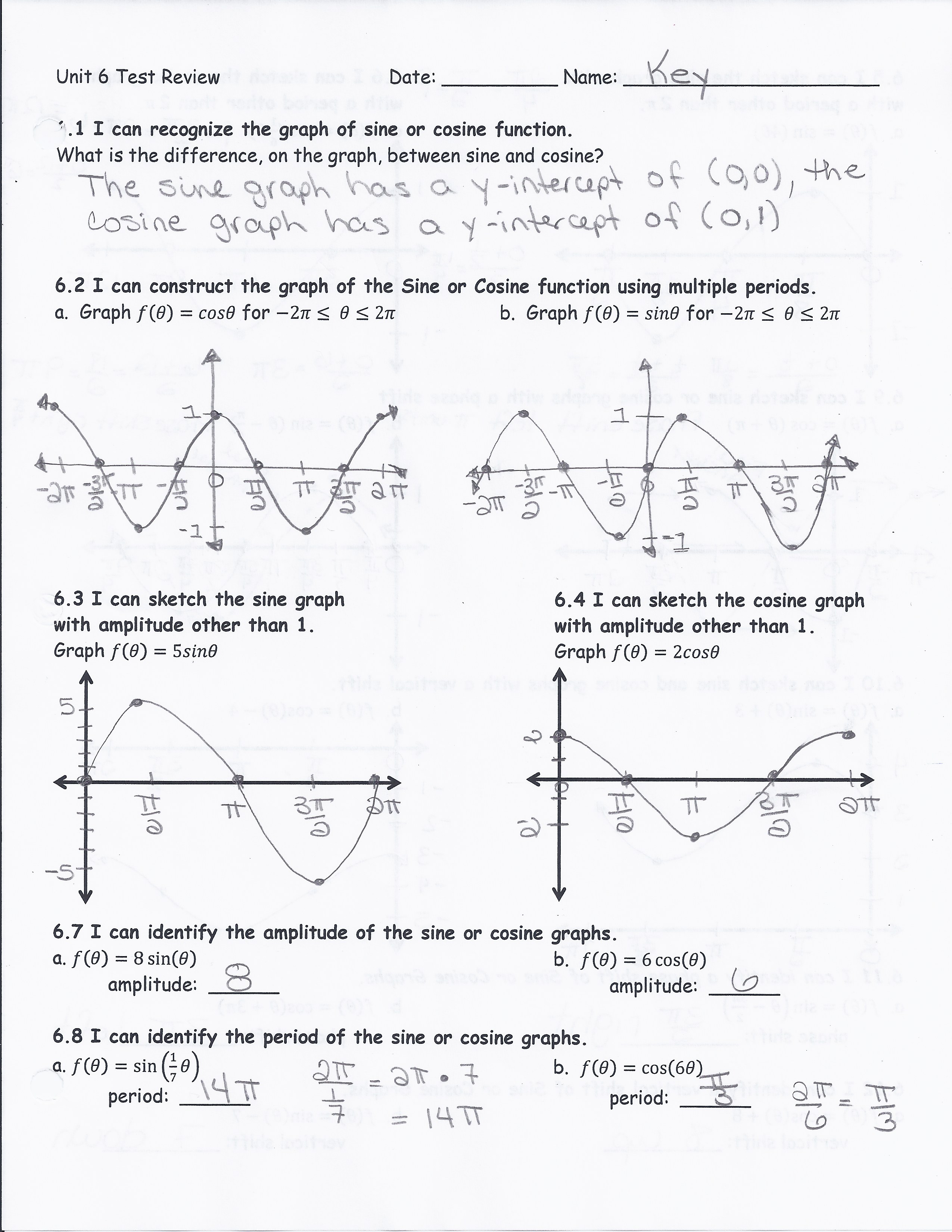

For example, the equation y=x is the parent linear function the equation y=2x+1 is still a linear function but it is not the parent function. They are the unaltered forms of your equations. Parent functions are the OGs of functions.

You’ve probably heard the term Parent Function with relation to graphing. Let’s jump into sketching some trigonometric graphs! Yes, you are going to have questions and need help. Yes, you are going to get problems wrong. Notice here how we say “practicing mathematics”, just like you practice an instrument or a sport, you are a beginner seeking improvement no matter what level of math you are currently at. If you are struggling to progress in math ask yourself if you are actually PRACTICING mathematics or are you thinking - or talking - about doing math instead? In a day and age where we so easily misconstrue talking about doing things as actually doing things, math remains one of those disciplines that can’t be faked. You can read about math, listen to lectures, watch other people do math but if you don’t actually grab a pencil and paper and struggle through the problems, you will never learn mathematics. The fact remains that you can’t learn math by standing on the sidelines. Well besides the obvious likelihood that you are reading this because in some Trigonometry, Precalculus, or Calculus course your instructor is requiring you to graph sans technology, I’d like to present the argument that true understanding can only be gained through *doing*. When you can easily enter any function you wish into Desmos or Wolfram Alpha from the comfort of your phone, why should you learn to graph functions longhand? Especially the more complicated functions like the ones we encounter in trigonometry? In our modern world, it may seem like graphing functions by hand is.well…a bit archaic.
#DESMOS GRAPHING SINE AND COSINE PLUS#
Plus their reciprocals: Cosecant, Secant, Cotangent Graphs


 0 kommentar(er)
0 kommentar(er)
